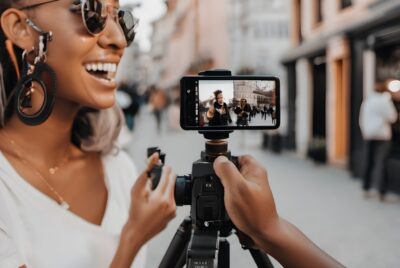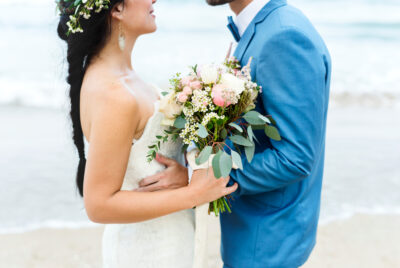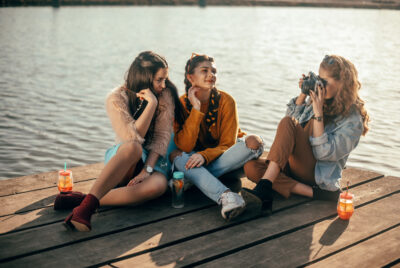Golden Hour Photography: Mastering Nature’s Most Magical Light
There’s something undeniably magical about the light just after sunrise or before sunset. That soft, golden glow that seems to wrap everything in warmth? That’s the golden hour. And let me tell you—it’s every photographer’s best friend.
As a long-time enthusiast of golden hour photography, I’ve chased this light in cities, fields, beaches, and mountain tops. If you’ve ever wondered why your photos look more cinematic at certain times of the day, you’re in the right place.
Let’s dive into the golden hour—what it is, why it’s so amazing, and how to absolutely crush your shoots using this golden gift from nature.
What is Golden Hour Photography?
Understanding the Science Behind the Glow
Golden hour happens when the sun is low in the sky—just after sunrise and just before sunset. During this time, sunlight has to pass through more of the Earth’s atmosphere, scattering blue light and leaving behind warmer tones like red, orange, and gold.
When Does Golden Hour Actually Happen?
It varies based on your location and the season, but typically, golden hour occurs:
-
Within the first hour after sunrise
-
Within the last hour before sunset
Apps like Golden Hour One or PhotoPills help pinpoint the exact timing in your area. Trust me—these tools are lifesavers.
>>> Today’s deals for cameras on Amazon CLICK HERE <<<
Why Golden Hour is a Photographer’s Dream
Soft, Diffused Lighting
Unlike harsh midday sun, golden hour light is gentle and flattering. You get fewer shadows, less contrast, and smooth skin tones—perfect for portraits.
Rich, Warm Tones
This light gives everything a rich, warm, golden tint—making even everyday scenes look like they belong on a postcard.
Long Shadows and Natural Drama
Want to add mood or mystery to your photo? Use the elongated shadows cast during golden hour. They add depth, texture, and drama without any Photoshop trickery.
Best Gear for Golden Hour Photography
Camera and Lens Recommendations
You don’t need the latest $6,000 camera to shoot during golden hour—but gear helps. Here’s what I love:
-
DSLR or Mirrorless Camera: Canon R5, Sony A7IV, Nikon Z6II
-
Lenses: Prime lenses with wide apertures like 50mm f/1.8 or 85mm f/1.4 are golden hour beasts
Filters and Accessories to Consider
-
ND Filters: Great for long exposures in landscape shots
-
Lens Hood: Prevent lens flare (unless you want it!)
-
Tripod: Essential for those dreamy low-light captures
Camera Settings for Golden Hour
Balancing ISO, Shutter Speed, and Aperture
-
ISO: Keep it low (100–400) to avoid noise
-
Aperture: Shoot wide (f/1.8–f/4) for creamy backgrounds
-
Shutter Speed: Adjust based on your subject’s movement—faster for portraits, slower for landscapes
Using White Balance Creatively
Set white balance to “Cloudy” or “Shade” to enhance those golden tones. Avoid auto white balance—it might neutralize the magic.
>>> Today’s deals for cameras on Amazon CLICK HERE <<<
Composition Techniques for Golden Hour Shots
Backlighting and Silhouettes
Shoot with the sun behind your subject to create dreamy backlighting or dramatic silhouettes. Bonus tip: use grass, leaves, or water to catch the light for that magical bokeh.
Framing with Natural Elements
Use trees, windows, or even people to frame your shot. The golden hour light will naturally guide the eye and create a storytelling vibe.
Golden Hour Portrait Photography Tips
Direct vs Indirect Sunlight on Subjects
Direct sunlight during golden hour is soft enough to shoot into, but you can also position your subject so the light hits from the side for added depth.
Using Reflectors and Fill Light
A gold or white reflector can bounce light back onto your subject’s face and reduce shadows. I use a foldable one—it’s cheap, portable, and super effective.
Landscape Photography During Golden Hour
Capturing the Sky and Sun Properly
Use a small aperture (like f/11 or f/16) to capture more detail in the landscape and sky. To prevent the sun from blowing out your highlights, try bracketing exposures or using HDR mode.
Using the Environment for Depth
Look for leading lines, foreground interest, and reflection opportunities. A puddle can become a mirror. A trail can lead the viewer’s eye through the frame.
Golden Hour Photography for Mobile Shooters
Best Mobile Settings and Apps
Most newer smartphones have great cameras. Use:
-
Portrait mode
-
Manual/Pro mode if available
-
Apps like Halide (iOS) or Camera FV-5 (Android)
Editing Tips on the Go
Apps like Snapseed, Lightroom Mobile, or VSCO let you tweak exposure, warmth, and contrast right from your phone.
Post-Processing Tips for Golden Hour Photos
Enhancing Light and Color
Boost contrast and clarity, but keep it subtle. A light touch on the temperature slider can enhance those golden tones.
Avoiding Over-Saturation
It’s tempting to crank the warmth, but golden hour already brings color. Aim for realism with a dash of magic, not a neon explosion.
Common Mistakes and How to Avoid Them
Being Unprepared or Late
Golden hour is brief—you’ve got 45–60 minutes tops. Arrive early, set up fast, and plan your shots ahead of time.
Overexposing Highlights
Use your histogram. If the right side is spiking, you’re losing detail in the highlights. Lower your exposure slightly and fix the rest in post.
Planning the Perfect Golden Hour Shoot
Using Apps to Predict Light
Apps like:
-
PhotoPills
-
Golden Hour One
-
Sun Surveyor
…help you track the sun’s movement, timing, and angles. Super handy for travel or location scouting.
Scouting the Location in Advance
Visit your shoot spot a day before. Note where the sun will set or rise, and look for great backdrops or reflection points.
Conclusion
Golden hour isn’t just a time of day—it’s a mood, a style, a secret sauce for making your photography stand out. Whether you’re shooting portraits, landscapes, or even with your phone, this magical light can elevate your work from good to unforgettable.
So grab your gear, set your alarm, and chase that golden light. You won’t regret it—and your photos will thank you.
>>> Today’s deals for cameras on Amazon CLICK HERE <<<
FAQs
1. Can I shoot indoors during golden hour?
Yes! Position your subject near a window where golden light is streaming in—it creates a beautiful, natural glow indoors.
2. What’s better: sunrise or sunset golden hour?
Both work great. Sunrise is usually quieter with cooler tones; sunset tends to be warmer and more dramatic.
3. How do I avoid lens flare during golden hour?
Use a lens hood or adjust your angle. Sometimes, though, a bit of flare adds character—use it creatively!
4. Should I use a flash during golden hour?
It’s optional. A gentle fill flash or reflector can help balance shadows, especially in portraits.
5. Can cloudy days still work for golden hour?
Yes! Even with cloud cover, you’ll get soft, diffused light—perfect for evenly lit, moody photos.
Further reading
Check out our other relevant articles:
Art of Portrait Photography: Master Techniques for Stunning Shots
Here are two educational resources that provide valuable insights into golden hour photography:
-
Ultimate Guide to Golden Hour Photography – Part I: Shooting
This comprehensive guide by Danielle Blewitt focuses on capturing stunning family and portrait photos during golden hour. It covers various lighting techniques, such as backlighting, and offers practical tips to enhance your golden hour photography skills. danielleblewittphotography.com -
Golden Hour Photography Tips – Adobe
Adobe’s guide delves into the nuances of golden hour photography, explaining how to leverage the warm, soft light for creative effects like silhouettes and lens flares. It also provides tips on adjusting white balance and blending HDR photos to make the most of this magical time. Adobe Creative Cloud
These resources offer in-depth perspectives on both the creative and technical aspects of golden hour photography, providing actionable strategies to enhance your skills and capture breathtaking images during this enchanting time of day.





Comments are closed.